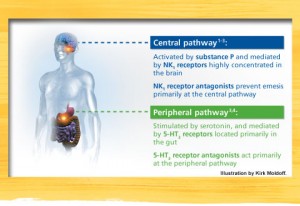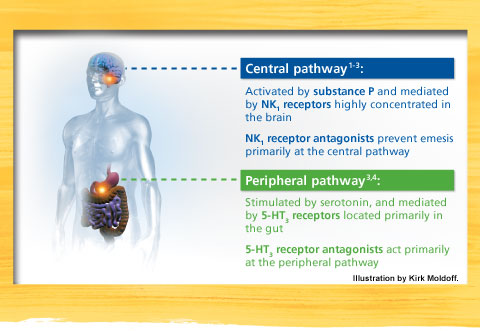 Those who read the anesthesia literature know that post-operative nausea and vomiting is a common topic. A colleague once said “if I have to read another puke article, I’m going to puke”. To the anesthetist, post op nausea is a concern. To the patient experiencing nausea along with post-op pain it is a terrible experience.
Those who read the anesthesia literature know that post-operative nausea and vomiting is a common topic. A colleague once said “if I have to read another puke article, I’m going to puke”. To the anesthetist, post op nausea is a concern. To the patient experiencing nausea along with post-op pain it is a terrible experience.
A recent article by Apfel et al (who is at risk for postdischarge nausea and vomiting after ambulatory surgery?) seeks to identify those most at risk for continued problems after discharge from a day surgery unit. “About one in four patients suffers from postoperative nausea and vomiting. Fortunately, risk scores have been developed to better manage this outcome in hospitalized patients, but there is currently no risk score for postdischarge nausea and vomiting (PDNV) in ambulatory surgical patients.”
The study by Apfel et al demonstrated a 37.1% incidence of post discharge nausea and vomiting (PDNV) with about 5% having severe vomiting. If extrapolated to the general outpatient population, about 4.3 million patients experience some form of PDNV. In this study, anti-emetic medications given in the recovery area did not have sufficient potency or duration to last into the post-discharge phase
The study went on to indentify risk factors for developing PDNV. They include:
- female gender
- age less than 50
- history of PONV
- PACU administered opiates
- experience of nausea in the PACU
The presence of 0, 1, 2, 3, 4, or 5 of these factors was associated with 10%, 20%, 30%, 50%, 60%, and 80% respectively.
The author concludes “PDNV affects a substantial number of patients after ambulatory surgery. We developed and validated a simplified risk score to identify patients who would benefit from long-acting prophylactic antiemetics at discharge from the ambulatory care center.”
Click here to read an abstract of the original article


